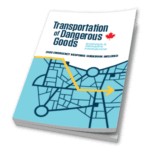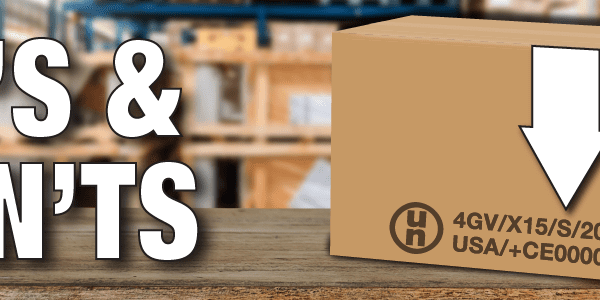Exploring the FastPass Program for Cross-Border Shipment of DG in North America
In the dynamic landscape of international trade, the efficient and secure transportation of goods is paramount. This is particularly true when it comes to the transportation of dangerous goods, which demands rigorous safety measures and regulatory compliance. North America, comprising both Canada and the United States, witnesses significant cross-border trade, including the shipment of hazardous materials. To streamline this process and ensure the safety of goods and communities, the FastPass program has emerged as a key initiative. In this article, we will delve into the benefits, as well as the potential drawbacks, of the FastPass program concerning the cross-border shipment of dangerous goods between Canada and the United States.
Pros of the FastPass Program:
Expedited Customs Clearance:
One of the primary advantages of the FastPass program is its ability to expedite customs clearance procedures for shipments of dangerous goods. By leveraging advanced technology and streamlined processes, FastPass reduces the time required for inspections and documentation verification at border checkpoints. This not only accelerates the movement of goods but also minimizes delays, thereby enhancing supply chain efficiency.
Enhanced Safety Standards:
The FastPass program emphasizes adherence to stringent safety standards for the transportation of dangerous goods. Through comprehensive risk assessment protocols and specialized training for personnel involved in handling hazardous materials, FastPass ensures that shipments comply with regulatory requirements and safety protocols. This proactive approach reduces the likelihood of accidents, spills, or other incidents during transit, thereby safeguarding both the environment and public health.
Facilitated Regulatory Compliance:
Navigating the complex regulatory landscape governing the transportation of dangerous goods across international borders can be challenging for businesses. FastPass simplifies this process by providing guidance and assistance to shippers in fulfilling regulatory obligations. By offering access to regulatory experts and centralized resources, the program helps businesses ensure compliance with relevant laws and regulations, thereby mitigating the risk of penalties or legal issues.
Cost Savings:
Efficient border clearance processes translate into cost savings for businesses engaged in cross-border trade of dangerous goods. By minimizing dwell times, reducing administrative burdens, and optimizing logistics operations, FastPass helps companies lower transportation costs and improve overall profitability. Moreover, the enhanced predictability and reliability of shipments facilitated by the program enable businesses to better plan and allocate resources, further enhancing cost-effectiveness.
Competitive Advantage:
In certain cases, participation in the FastPass program can provide businesses with a competitive edge in the market. The ability to expedite the clearance of dangerous goods shipments gives companies a time-to-market advantage, allowing them to respond more swiftly to customer demands and market fluctuations. Moreover, by demonstrating a commitment to safety and regulatory compliance through participation in FastPass, businesses can enhance their reputation and credibility, potentially attracting more customers and business partners. This competitive advantage is particularly significant in industries where speed, reliability, and compliance are critical factors influencing purchasing decisions.
Cons of the FastPass Program:
Implementation Challenges:
Despite its benefits, the implementation of the FastPass program may encounter challenges related to technological integration, infrastructure requirements, and stakeholder coordination. Integrating disparate systems and ensuring interoperability between customs authorities, regulatory agencies, and industry stakeholders can be complex and time-consuming. Moreover, the need for continuous updates and enhancements to keep pace with evolving regulations and security threats poses ongoing challenges for program implementation.
Security Concerns:
While FastPass aims to expedite the clearance of dangerous goods shipments, some critics raise concerns regarding potential compromises in security measures. Expedited processing may inadvertently result in lapses in inspection procedures or inadequate scrutiny of high-risk shipments. This could create vulnerabilities that malicious actors could exploit for illicit activities, including smuggling or terrorism. Balancing the need for efficiency with robust security protocols remains a significant challenge for the program.
Compliance Risks:
Despite the program’s focus on facilitating regulatory compliance, there is a risk that some participants may attempt to circumvent or manipulate the system to bypass regulations or conceal non-compliant shipments. This poses regulatory and reputational risks for both businesses and regulatory authorities involved in the FastPass program. Ensuring integrity and transparency in the application of program guidelines is essential to mitigate such compliance risks and maintain the program’s credibility.
In conclusion the FastPass program represents a significant step forward in enhancing the safety, efficiency, and reliability of cross-border shipments of dangerous goods between Canada and the United States. By leveraging technology, collaboration, and streamlined processes, FastPass offers tangible benefits for businesses while prioritizing safety and regulatory compliance. However, challenges such as implementation complexities, security concerns, and compliance risks underscore the need for continuous monitoring, adaptation, and improvement of the program. Through ongoing collaboration between government agencies, industry stakeholders, and regulatory bodies, the FastPass program can continue to evolve as a model for facilitating secure and efficient trade in hazardous materials across North America.
Do you have any questions about upcoming regulatory changes in the United States or Canada? Our team of experts is just a call away for our customers at 855.734.5469 or send us an email, we’re happy to help.
Stay up to date and sign up for our newsletter!
We have all the products, services and training you need to ensure your staff is properly trained and informed.
 4GV UN Variation Boxes 4GV UN Variation Boxes |
 Canadian TDG Publications Canadian TDG Publications |
 Shipping Dangerous Goods Shipping Dangerous Goodsby Ground (TDGR) |






